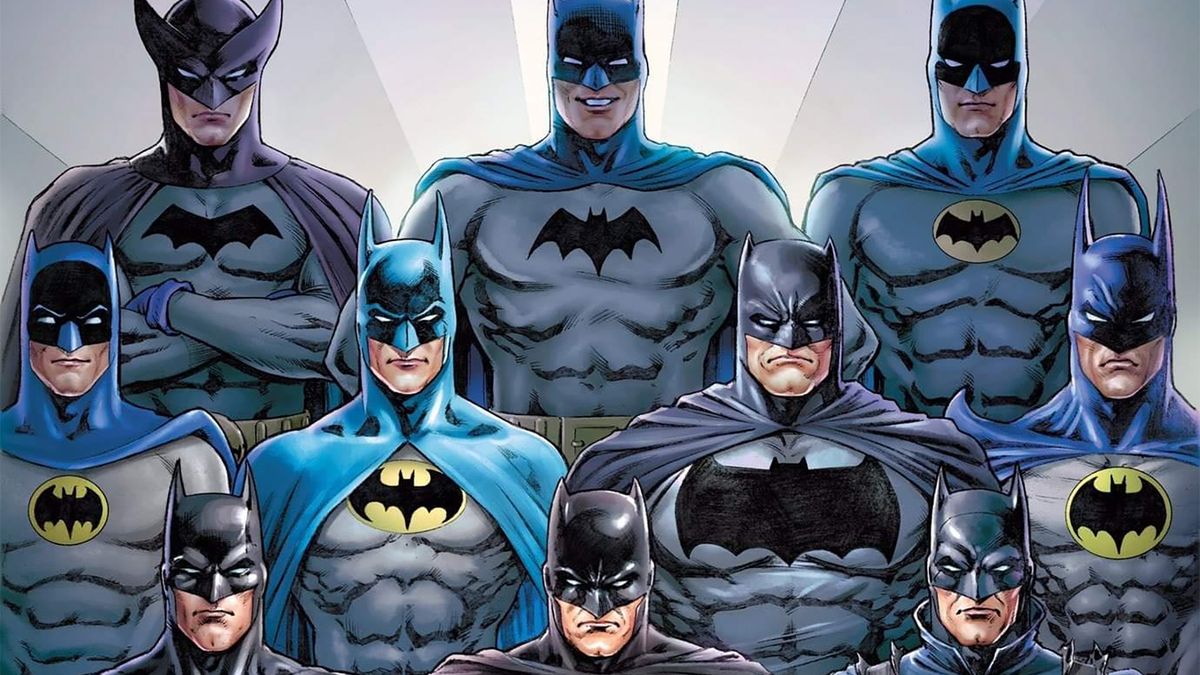
Part of the new expanded Multiverse concept introduced in January's Dark Nights: Death Metal #7 called the Omniverse in which every DC story ever told is in continuity, the Linearverse somewhat ironically does away with the need for why the DC Multiverse was created for in the first place. .
A natural assumption about the Generations story in wake of the reveal that all stories are now in continuity in the new Omniverse is that heroes are plucked from different Earths from the Multiverse representing the different timelines.Instead, in Forged's final pages readers learn the despite all the familiar trappings of DC's past and future in the storyline like the original depictions of Superman's birth world of Krypton, it all actually takes place in its own new corner of the Omniverse called the Linearverse, in which all of DC's 80+ year history takes place in one singular and, of course, linear timeline on one Earth. .In the Linearverse, "people age far more slowly, living much longer than elsewhere," Waverider (a gatekeeper of DC's timelines) explains to Batman in the final pages of Forged?
Co-writer Dan Jurgens tells Newsarama the Linearverse gives readers "a place that embraces a different concept of DC history.".Because people age differently in the Linearverse, Jurgens explains, Batman is "still young and vivacious enough to have operated as Batman through the 40s, 70s, 90s and all the way up to today.The Linearverse is the formalization of an approach some writers like Grant Morrison unofficially took during their Batman days, but for the moment exists as a separate reality within the Omniverse."It's fair to say that what we built here, the Linearverse, is its own universe that can fit into the larger context of DC's Omniverse," explains Jurgens.Because so much of DC's storytelling has been preoccupied with creating a cohesive timeline for nearly 40 years now, the Linearverse requires some creative conceits to make it all work as well. ."Whenever you try to build these things, some accommodations have to be made because it's never a clean fit," answers Jurgens when asked about how stories like Frank Miller's seminal Batman: Year One from 1987 (which assumes Batman's early years took place in more contemporary times) fit into the Linearverse concept.Jurgens was very clear that while this new Linearverse "is a place where some unique and individual stories can be told," that it also fits within the "larger context of the Omniverse." But close watchers of DC can't also help but wonder what may have been, and whether this approach was once slated to be official DC continuity.Remember, Generations: Shattered and Forged is a somewhat reimagined version of what was intended to be, in early 2020, DC's big, universe-redefining event kicking off the new decade in five monthly installments, along with a Free Comic Book Day (FCBD) prologue.Asked if the Linearverse was the endgame of the initial 2020 iteration of Generations, or if it came about during the process of developing what Generations would become, Jurgens tells Newsarama its origins go back to the original version. Whatever the original intention, the Linearverse now exists as a playground in which new stories can be told within the Omniverse, and Jurgens and his co-writers ended the story practically inviting DC to explore it more.Â"There are all sorts of stories and adventures worth exploring in the Linearverse," Jurgens concludes
